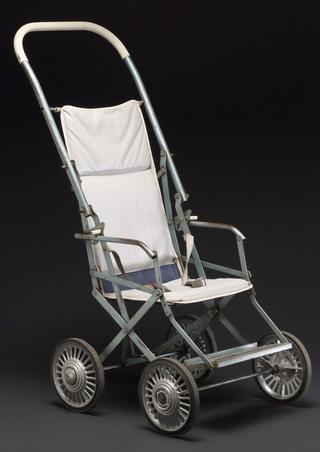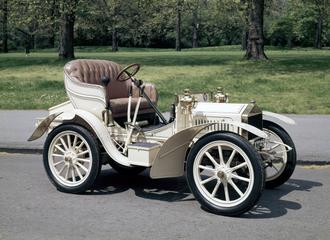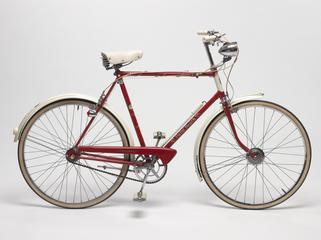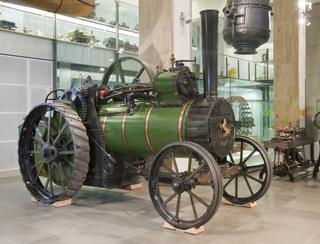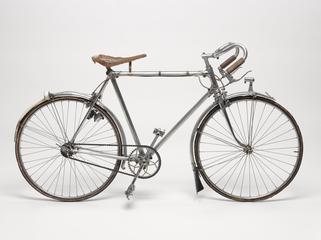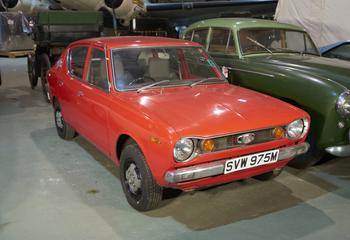
Brougham Wagonette
- Made:
- Late 19th century/early 20th century in London




This Brougham wagonette built between the late 19th century and early 20th century by the Victoria Carriage Works in London, It is a 4 wheeled carriage designed to be pulled by two horses. The exterior and undercarriage are painted black.
The carriage has a body that contains four passenger seats, which have black leather upholstery.
There are also two seats at the front, one of which would be used by the driver. These front seats are protected from upturned mud and stones by a black leather dash, and on either side of these front seats there are lamps installed on side fittings. There is also storage space under the driver’s seat.
This carriage has a spoon braking system installed, which is controlled by a hand brake next to the driver’s seat. The wheels have hub caps which are engraved “Victoria Carriage Works Ltd, 25 Long Acre London”.
Broughams are four-wheel carriages designed by and named after Lord Chancellor Henry Brougham in 1838. He wanted a refined town carriage, intended for gentlemen and professionals, which would be lighter and more maneuverable than the heavy, bulky coaches of his time. The design of the Brougham was characterised by its compact two-seat design, its low profile and light weight frame, which was typically drawn by a single horse.
This particular carriage is an unusual variant of Brougham, distinguished by having bench-style seats that were placed lengthwise and facing each other in the style of a wagonette rather than facing forward. The door is therefore at the back of the carriage rather than one on each side.
It was built by the Victoria Carriage Works, which was established in the early 1890s, and based in 25 Long Acre, London.
The enclosed seating and compact design allowed for Brougham carriages to be used more widely on city and country roads. Along with the Clarence which developed from it, Broughams were the most common type of enclosed carriage in the UK in the late nineteenth century. The number of variations created, like this one, illustrate the carriage’s popularity.
Details
- Category:
- Road Transport
- Object Number:
- 1938-605
- Materials:
- wood (unidentified), metal (unknown), paint, textile, rubber (unidentified) and leather
- Measurements:
-
overall: 2080 mm x 1700 mm x 2500 mm,
- type:
- wagonette
- credit:
- Smart, Moore and Saunders
